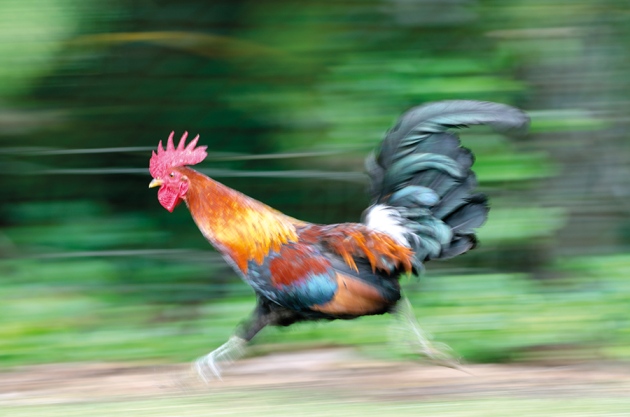
Rich Reid/Natl Geographic Creative
A wild rooster in Kauai, Hawaii.
“Don't look at them directly,” Rie Henriksen whispers, “otherwise they get suspicious.” The neuroscientist is referring to a dozen or so chickens loitering just a few metres away in the car park of a scenic observation point for Opaekaa Falls on the island of Kauai, Hawaii.The chickens have every reason to distrust Henriksen and her colleague, evolutionary geneticist Dominic Wright, who have travelled to the island from Linköping University in Sweden armed with traps, drones, thermal cameras and a mobile molecular-biology lab to study the birds.
LISTEN
Ewen Callaway investigates what happens when domestic chickens go wild
00:00
Opaekaa Falls, like much of Kauai, is teeming with feral chickens — free-ranging fowl related both to the domestic breeds that lay eggs or produce meat for supermarket shelves and to a more ancestral lineage imported to Hawaii hundreds of years ago.
These modern hybrids inhabit almost every corner of the island, from rugged chasms to KFC car parks. They have clucked their way into local lore and culture and are both beloved and reviled by Kauai's human occupants. Biologists, however, see in the feral animals an improbable experiment in evolution: what happens when chickens go wild?
Read the rest of the article here.

No comments:
Post a Comment